📅 Planning the Trip
The trip was planned with both comfort and charging stops in mind. I mapped out the route in A Better Routeplanner (ABRP) and checked accommodations with charging options via Booking.com and local hotel chains such as Strawberry (a Nordic hotel group). This planning made it easy to combine driving, breaks, and geocaching On this trip, Ionity became my best friend – especially since they’ve lowered their charging prices significantly compared to many competitors. With a subscription, the rates were NOK 3.00 in Norway, SEK 3.50 in Sweden, and DKK 2.50 in Denmark – roughly half the cost of other networks, except for Tesla, which also offers competitive pricing. This trip reminded me how much easier long-distance electric driving has become – something that seemed more challenging just a few years ago. With my 2020 Nissan Leaf road trip still fresh in memory.
In this post, I share my experience with the Nissan Ariya 87 kWh e-4ORCE on an EV road trip through Norway, Sweden, and Denmark in spring 2025. The weather was typical for the season with around 10°C and dry, pleasant road conditions. The route went from Gardermoen (near Oslo Airport) to Rødbyhavn (a ferry port in southern Denmark) and back to Oslo, focusing on comfort, range, charging, and technology in the Ariya. The car proved to be a comfortable and reliable travel companion – on highways, narrow side streets, and country roads.
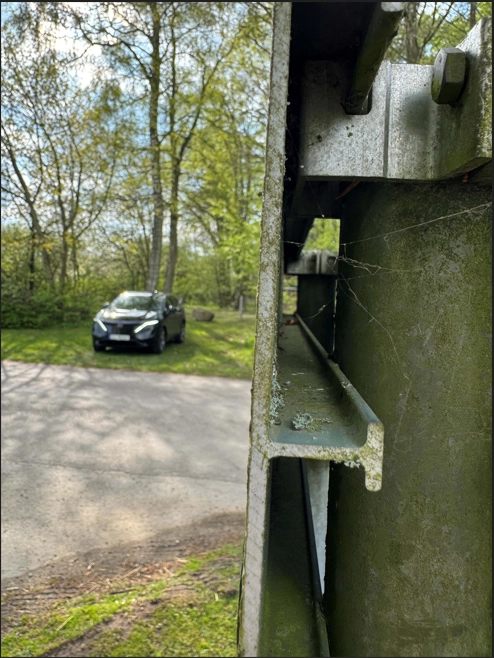
🚘 Driving Comfort in the Nissan Ariya
The Ariya impressed me with its comfort. It was quiet and smooth, with a relaxed driving style – ideal for covering long distances. Driver assistance systems like adaptive cruise control and lane keeping worked precisely and eased the strain over longer stretches. The adaptive cruise control is among the best I’ve used. It keeps a safe distance from the vehicle ahead and responds well to traffic. Perhaps the distance was a bit too generous in heavy traffic, even at the shortest setting. Some cars used the gap to merge in, but I prefer that over tailgating at 120 km/h.
If I had one criticism, it's that the suspension felt a bit stiff. I often got a “bouncy ball” feeling while driving, which was occasionally uncomfortable. I can’t recall experiencing this in other vehicles.

⚡ Charging, Range, and Charging Speed in the Nissan Ariya
With proper planning, charging was never an issue. The Ariya supports CCS and was able to use many Tesla Superchargers now accessible to non-Tesla EVs. The car peaks at 130 kW, and I often saw charging speeds of 110–120 kW in the first few minutes. While it doesn’t reach the top speeds of competitors like the Tesla or Xpeng 6 (which charge up to 250 kW), the range was more than adequate for me. When I stopped to charge, it usually coincided with a lunch or dinner break – so the charging speed worked well in practice.
Charging was stable and predictable, making it easy to plan stops. Here is an overview of the charging stops along the way:
Total energy consumption on the trip was 423.29 kWh across 10 charging stops. With a driving distance of approximately 1,750 km, this gives an average consumption of 242 Wh/km. This relatively high figure is due to most of the trip being on motorways at typical highway speeds (110–130 km/h). On country roads, the display showed a consumption between 165 and 175 Wh/km. Note that this average includes charging losses – the energy lost between charger and battery. That means actual battery consumption is slightly lower, but since we pay for the energy delivered by the charger, it makes sense to include it.
Spekerød, Norway (Ionity) – 59.85 kWh ⚡️
Quality Hotel Winn, Sweden – 37.27 kWh ⚡️ (overnight)
Ionity Greve, Denmark – 61.47 kWh ⚡️
Ionity Vordingborg, Denmark – 36.65 kWh ⚡️
Copenhagen, Denmark – 29.30 kWh ⚡️ (overnight)
Ionity Helsingborg, Sweden – 37.94 kWh ⚡️
Tesla Falkenberg, Sweden – 27.60 kWh ⚡️
Ionity Spekerød, Norway – 30.10 kWh ⚡️
Ionity Rygge, Norway – 57.11 kWh ⚡️
Sandvika Storsenter, Norway – 46.00 kWh ⚡️ (overnight)
Tools like ABRP and PlugShare were useful for finding appropriate chargers along the route. The Nissan Ariya works well with a subscription to A Better Routeplanner (ABRP), which enables advanced route planning and can be used directly via Apple CarPlay. For Ariya owners, this makes it easy to stay on top of range and charging stops throughout the journey.
.-j-p-g)
🧠 Infotainment and Navigation in the Nissan Ariya
The infotainment system in the Ariya is clean and easy to use. The built-in navigation worked fine, but Waze via Apple CarPlay quickly became my preferred choice. I appreciated the mix of touchscreen and physical buttons – a practical setup in daily use.
What I missed, however, was an integrated route planner – like Tesla or Google offer. With those, you enter your destination and the car automatically suggests charging stops. In the Ariya, you need to plan this manually, which shifts your attention to the next charger rather than the whole journey. It works, but feels a bit outdated in an otherwise modern car.
🧳 Space and Practical Features in the Nissan Ariya
The Ariya offers plenty of space. I had ample room for luggage, and the cabin felt roomy both front and back. I especially appreciated that the car automatically lifts the steering wheel and moves the seat back when turning off the engine and opening the driver’s door – a small detail that makes entry and exit easier. I also liked that the center console can be adjusted forward and backward, which provides more foot space and prevents a cramped feeling.
The trunk isn’t class-leading, and may be a bit tight for a family of four or five. But for two people, there’s plenty of room for suitcases and geocaching gear. A flat rear floor and powered tailgate also made everyday use along the way more convenient.

✅ Conclusion: Is the Nissan Ariya Good for Long Trips?
The Nissan Ariya proved solid on a long-distance trip. It may not be best in every category, but it gets many things right. Most importantly, it took me from Gardermoen to Rødbyhavn and back – comfortably, safely, and electrically.
Nissan Ariya passed the road trip test with flying colors – and was almost missed when the journey came to an end.
.png)
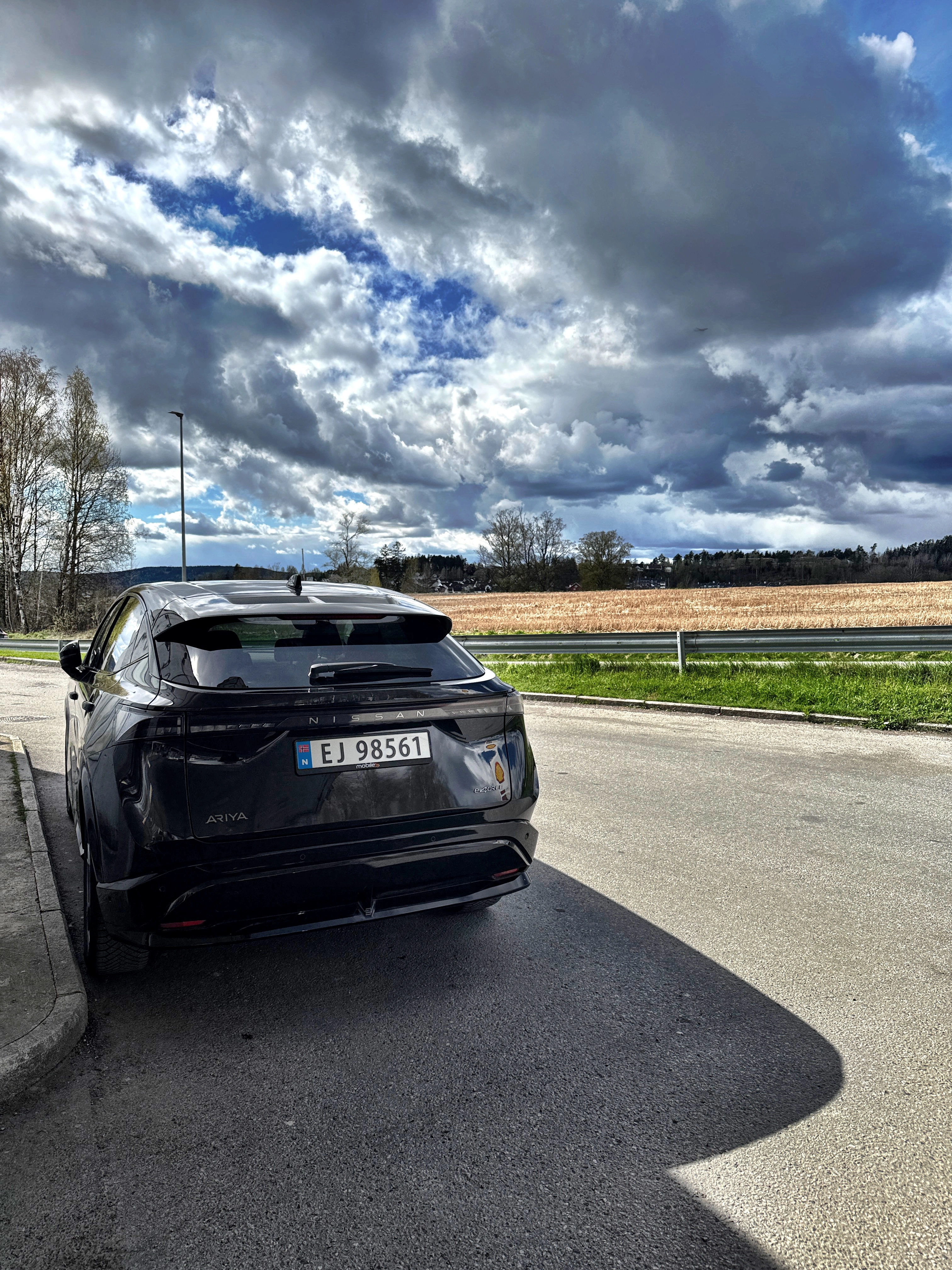

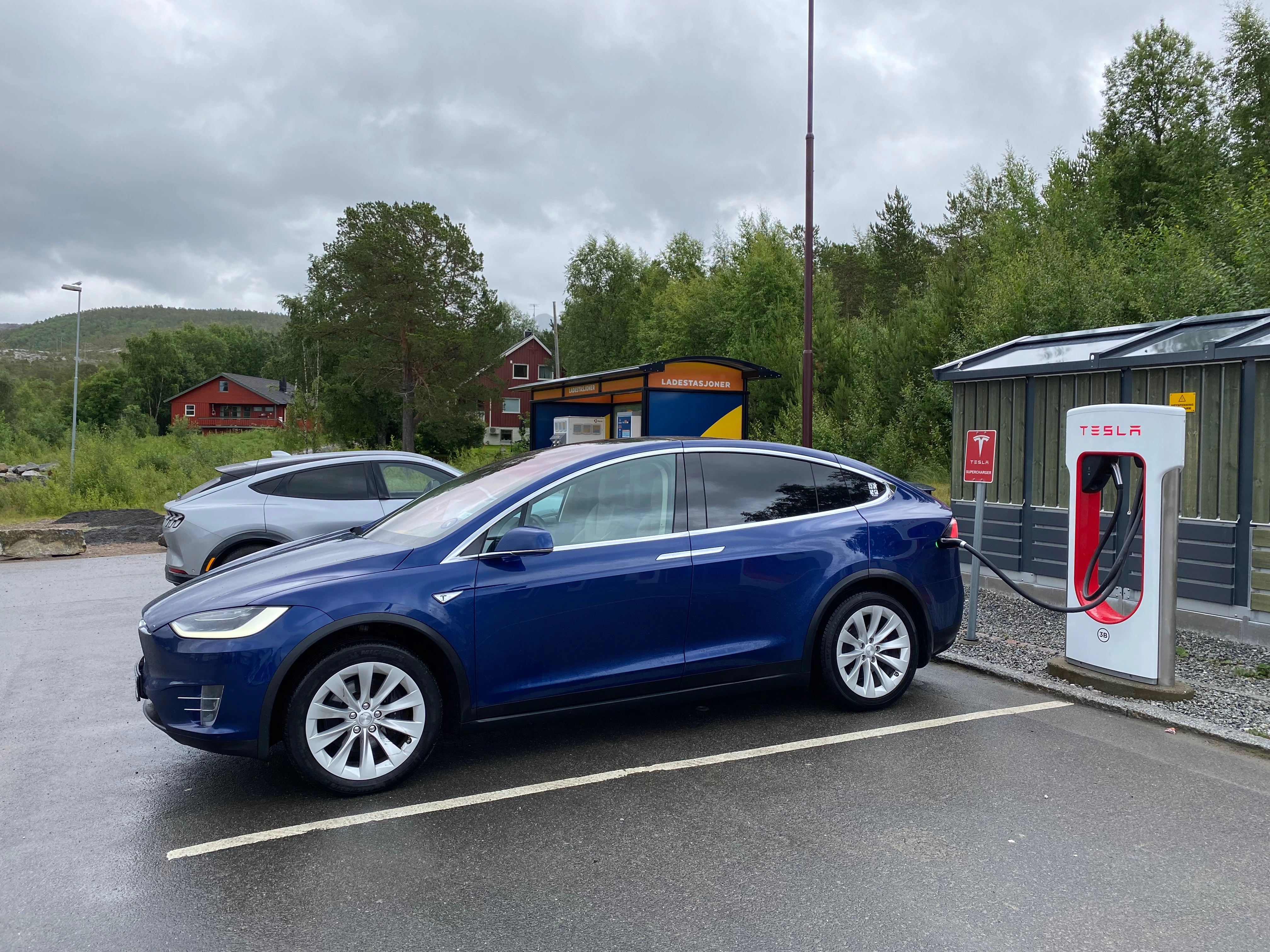
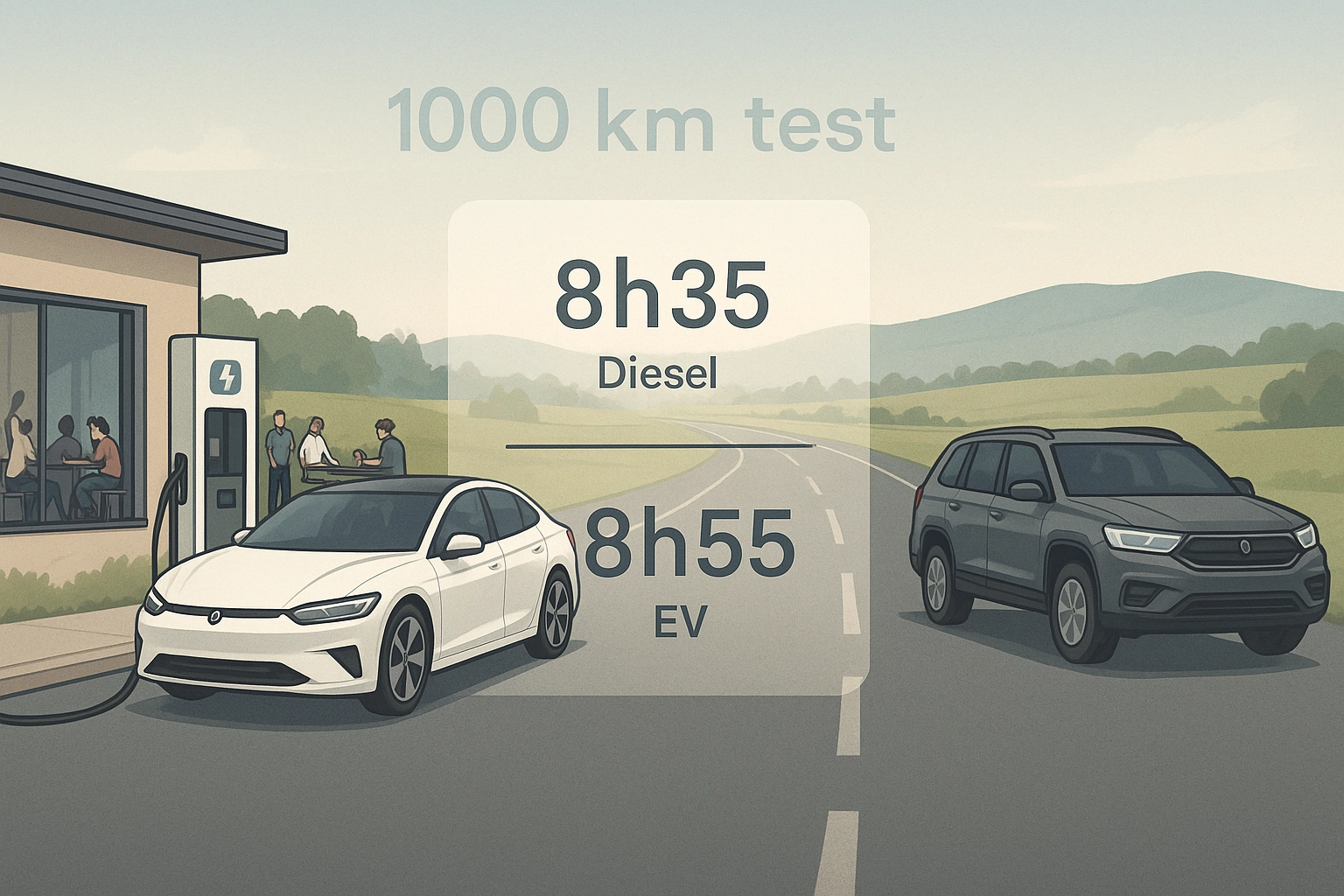
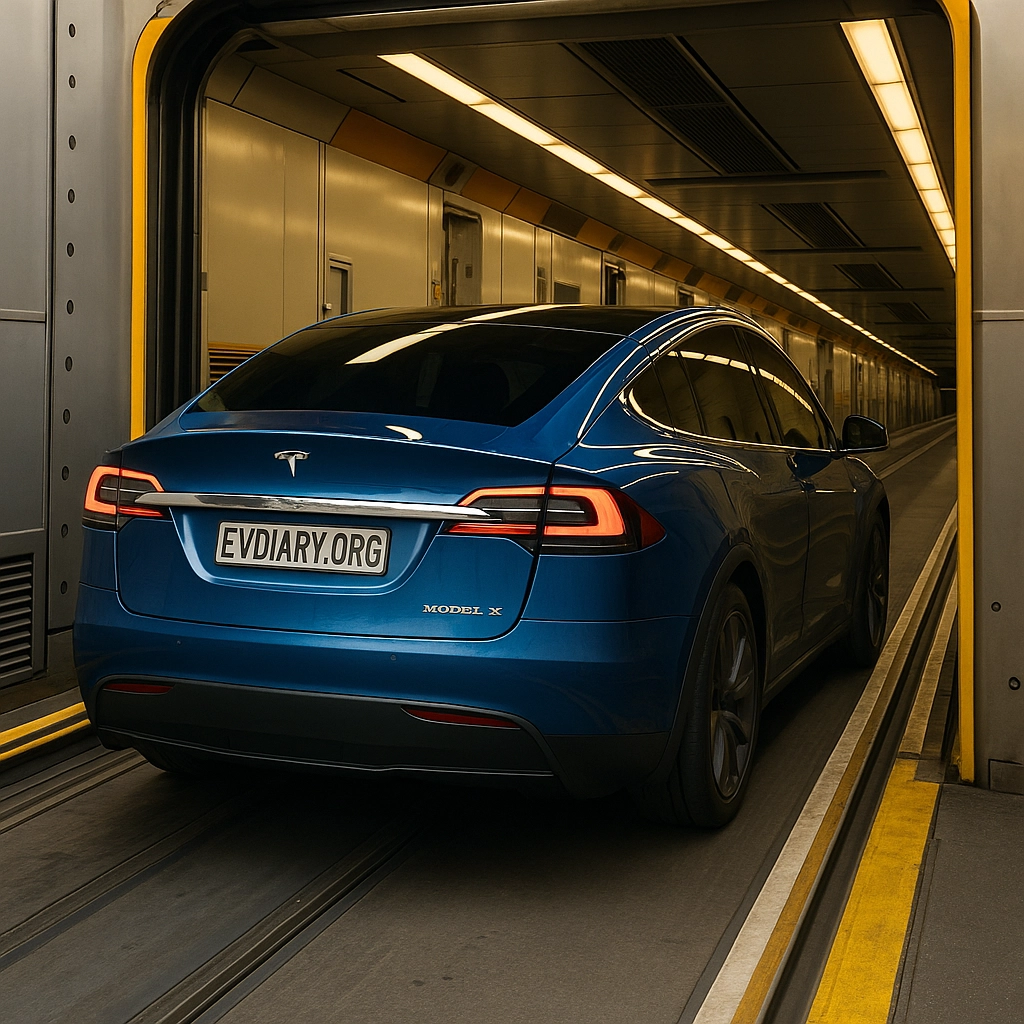
Comments